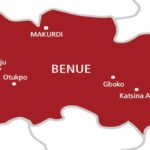Community empowerment refers to the process of enabling communities to increase control over their lives.
‘Communities’ are groups of people that may or may not be spatially connected, but who share common interests, concerns or identities. These communities could be local, national or international, with specific or broad interests.
‘Empowerment’ refers to the process by which people gain control over the factors and decisions that shape their lives.
It is the process by which they increase their assets, attributes and build capacities to gain access, partners, networks and/or a voice, in order to gain control. ‘Enabling’ implies that people cannot “be empowered” by others; they can only empower themselves by acquiring more of power’s different forms (Laverack, 2008).
It assumes that people are their own assets, and the role of external agent is to catalyse, facilitate or ‘accompany’ the community in acquiring power.
Community empowerment as envisaged by the Nigerian Great Green Wall programme is more than the involvement, participation or engagement of communities.
It implies community ownership and action that explicitly aims at social and political change. Community empowerment is a process of re-negotiating power in order to gain more control. It recognises that if some people are going to be empowered, then others will be sharing their existing power and giving some of it up.
No wonder, therefore, those communities through which the wall of trees is expected to pass are encouraged to jointly own nurseries, orchards and woodlots that would be readily available to government seedlings of various trees to be planted along the routes.
So far, 92 communities have in place their nurseries and orchards to decentralise seedling production and distribution, and reduce problems associated with seedling transportation.
Each community nursery is fenced, provided with solar or wind powered borehole and can produce 50,000 tree seedlings per annum. It is envisaged that more than 40 per cent of the required seedlings for shelterbelts, woodlots, orchards and agro-forestry will be sourced from the nursery.
The community nurseries receive materials and technical support from the GGW Programme, while the local communities contribute labour and management.
In Gambaki, Katagum Local Government Area of Bauchi State women were allowed a section in the community orchard where seedlings of various plants are raised to cultivate vegetables which are sold and the proceeds shared among them.
Mariam Sani, leader of the women group known as Gambaki Hikima said that the proceeds from the vegetables assisted the women in catering for their families. “We are very happy. The little money we make from selling vegetables is helping us to also provide for our families. We don’t buy water to water it because government has already provided boreholes for us,” she said.
In Guda community of Jama’are Local Government Area of Bauchi, men, including retired civil servants, are active participants at the community orchard where members of the community contribute money to plant the seedlings and later sell to government.
Malam Saidu Wakili, a retired principal and spokesperson for the community said that the community orchard was a welcome development that members have embraced as income earner.
“We contribute very little to plant the seedlings, government has already provided boreholes for us, all we have to do is to water the seedlings and before you know it, the government people will come and buy it from us,” Wakili said.
At Makoda Local Government Area of Kano State, members of the Kandandali community said the introduction of the community orchard with the provision of solar powered borehole has offered them the opportunity to undertake all year round vegetable farming.
It would be recalled that in 2014, a total of 305 forest guards were trained and engaged in their respective communities for the management of shelterbelts, woodlots, orchards and nurseries.
It is the vision of the Nigerian Great Green Wall Programme to create vibrant, equitable and sustainable rural communities through strategic investment in social and economic infrastructure. This will enable rural communities to address basic human needs, while engaging in economic activities. Minimum amount of investment in social infrastructure such as watering points, roads, tracks, market places, grain input stores etc, can contribute significantly towards rural poverty alleviation.
Improving the welfare of inhabitants of the drylands can be strengthened, either through the enhancement of existing livelihoods or the promotion of alternative ones. The diversification of income for the rural poor in the dry lands is vital to reducing the risks of cropping from marginal lands and environmental pressure on erodible or degraded lands towards more sustainable levels.
The project as currently implemented is providing alternative income sources for those whose livelihood is being affected, particularly women and the poor unemployed youths who have little or no productive resources.
Success of these livelihoods depends on building capacity of these communities, ensuring support from government through enabling policies, and providing solutions that fit the social and cultural constraints in those communities.
 Join Daily Trust WhatsApp Community For Quick Access To News and Happenings Around You.
Join Daily Trust WhatsApp Community For Quick Access To News and Happenings Around You.


